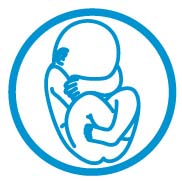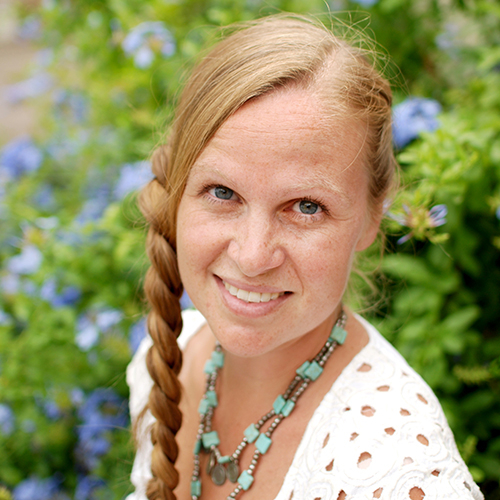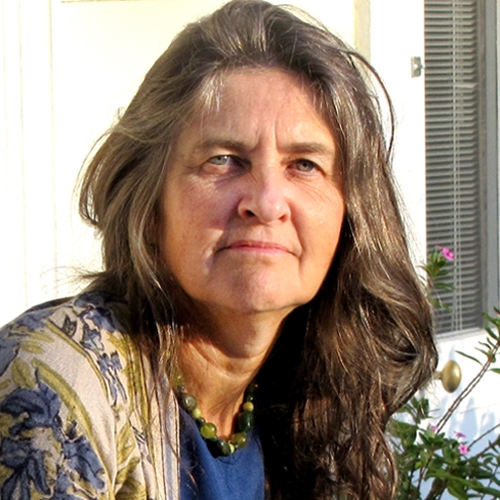
Advancing the Art of Breech Birth Lecture Pack
The climate of vaginal breech birth is changing as more families push to have it available as an option. There has been a lot of recent research that challenges some standard practices making it crucial to stay up-to-date. This special package brings together leading experts in the field to share their knowledge, wisdom and experience of helping families to safely experience the vaginal birth of their breech babies.
This lecture package was originally offered as part of the GOLD Midwifery Online Conference 2022.


Dr Shawn Walker is a midwife who specialises in care for women with a breech presenting baby at term. She is currently an NIHR Advanced Fellow, exploring the feasibility of a randomised trial (https://optibreech.uk/). Academically, she is based at King's College London, and clinically, she works with Chelsea and Westminster Hospitals NHS Foundation Trust. Her publications can be found at https://breechbirth.org.uk/publications/.
Topic: The Optibreech Trial Feasibility Study: The Role of Breech Specialist Midwives - [View Abstract]
Topic: Understanding the Mechanisms as the Key to Safe Breech Birth - [View Abstract]
Topic: Using Research to Improve the Way We Teach and Learn Vaginal Breech Birth - [View Abstract]
Topic: Using Research to Optimise Safety and Availability of Vaginal Breech Birth - [View Abstract]
1. Explain the normal time limits around the time of emergency in a vaginal breech birth, and the association between unnecessary delay and admission to the neonatal unit following a vaginal breech birth.
2. Describe some of the outcomes of vaginal breech birth that women and birthing people say are important to them, in addition to neonatal mortality and morbidity.
3. Identify how research-based physiological breech training changes clinical practice, and what this might mean for your own setting.
This presentation considers physiological breech research published within the last two years, and its implications for how we teach and practice vaginal breech birth safety skills.


David Hayes is an OBGYN with an academic background and a passion for science and its proper application to clinical medicine. He has worked for Médecins Sans Frontières and trained in critical care obstetrics.
Dr. Hayes pursued training in vaginal breech birth during both medical school and his residency in Obstetrics and Gynecology, at a time when instruction in vaginal breech birth was no longer routinely included in the training of obstetricians in the United States. He has performed an estimated 140 vaginal breech births using traditional obstetric maneuvers in dorsal lithotomy positions. In 2016 he hosted a training session on physiologic vaginal breech birth taught by Dr. Shawn Walker, PhD. Since that time he has been fortunate to many vaginal breech births, including breech-breech twins and primiparous mothers, with a 100% successful vaginal breech birth rate and no significant complications or instrument interventions.
In 2018, Dr. Hayes arranged to host a workshop presented by breech researcher Dr. Rixa Freeze, PhD and was asked to teach the “hands-on” portion of the workshop. As of August 2019 and in conjunction with Dr. Freeze and her organization Breech Without Borders, he has committed full time to training and reestablishment of physiologic vaginal breech birth.
Dr. Rixa Freeze has a PhD in American Studies from the University of Iowa. Her doctoral studies focused on the history of healthcare and medicine with specialization in pregnancy, childbirth, and maternity care. Her dissertation examined why women in North America choose unassisted home births. She worked as a visiting assistant professor for 9 years at Wabash college. Her current research interests include human rights in childbirth, autonomy and informed consent, and vaginal breech birth.
She has published two articles about home birth: “Staying Home to Give Birth: Why Women in the United States Choose Home Birth” (JMWH 2009) and “Attitudes Towards Home Birth in the USA” (Expert Review of Obstetrics & Gynecology 2010). She recently published the article “Breech birth at home: Outcomes of 60 breech and 109 cephalic planned home and birth center births” with BMC Pregnancy & Childbirth. In 2019 she published an article about outcomes of breech at home, birth centers, and hospitals (Midwifery Today) and a book chapter “Freebirth in the United States” in the 2020 book Birthing Outside the System: The Canary in the Coal Mine.
Dr. Freeze is the founder and president of Breech Without Borders, a 501(c)3 nonprofit dedicated to breech training, education, and advocacy. She also blogs at Stand and Deliver (rixarixab.blogspot.com).
1. Identify deviations from normal mechanisms during vaginal breech births.
2. Describe what is causing the deviations (legs, arms, head, maternal soft tissues.)
3. Evaluate whether or not the deviations are interfering with the birth and whether the overall clinical picture warrants intervention (time elapsed since rumping, fetal condition, maternal condition, etc.)
4. Choose the appropriate maneuvers to correct the deviations.
This presentation shows breech birth videos submitted to Breech Without Borders for analysis & educational purposes. In this session, the instructors present videos that show some type of deviation from normal physiological birth. Some of the births resolve spontaneously, while others require assistance in the form of maneuvers. As the videos play, the instructors discuss what they are seeing, point out what was done correctly and what might have been done differently, and give clinical tips to the audience members for when they are attending vaginal breech birth.


Dr. Rixa Freeze has a PhD in American Studies from the University of Iowa. Her doctoral studies focused on the history of healthcare and medicine with specialization in pregnancy, childbirth, and maternity care. Her dissertation examined why women in North America choose unassisted home births. She worked as a visiting assistant professor for 9 years at Wabash college. Her current research interests include human rights in childbirth, autonomy and informed consent, and vaginal breech birth.
She has published two articles about home birth: “Staying Home to Give Birth: Why Women in the United States Choose Home Birth” (JMWH 2009) and “Attitudes Towards Home Birth in the USA” (Expert Review of Obstetrics & Gynecology 2010). She recently published the article “Breech birth at home: Outcomes of 60 breech and 109 cephalic planned home and birth center births” with BMC Pregnancy & Childbirth. In 2019 she published an article about outcomes of breech at home, birth centers, and hospitals (Midwifery Today) and a book chapter “Freebirth in the United States” in the 2020 book Birthing Outside the System: The Canary in the Coal Mine.
Dr. Freeze is the founder and president of Breech Without Borders, a 501(c)3 nonprofit dedicated to breech training, education, and advocacy. She also blogs at Stand and Deliver (rixarixab.blogspot.com).
Topic: Physiological Breech Birth - [View Abstract]
1. Identify deviations to normal breech birth and answer the 4 questions on the decision tree.
2. Describe and perform the maneuvers on a simulator or doll & pelvis.
3. Correctly identify which maneuvers address which obstructions.
This presentation demonstrates both upright and supine maneuvers for resolving obstructed breech birth using an obstetrical simulator. After reviewing the vaginal breech decision tree developed by Dr. David Hayes, we review the following maneuvers:
Upright maneuvers:
Front to Back (aka "Face to Pubes" or "Prayer Hands")
Side to Side (aka Louwen maneuver)
Upright Lovset
Shoulder press
Rock & Roll
Ritgen
Finger forceps (aka Finger Flexion or Crowning Touch)
Mauriceau-Banks/Cronk (upright MSV)
Chin tuck
Elevate-flex-rotate (for hyperextended head in the pelvic inlet)
Supine maneuvers:
Lovset
Burns-Marshall
Bracht
Pinard
MSV (Mauriceau-Smellie-Veit)


Dr Reitter is a fetal maternal medicine specialist working at present as the lead consultant at the Obstetrics and prenatal medicine department at Sachsenhausen Teaching Hospital in Frankfurt, Germany.
One of her main research interest focuses on upright birth. She is lead author in major work regarding upright breech delivery and provides opportunities for pregnant women. She is actively engaged in national and international teaching programs related to breech.
She finished her medical training in Germany, started her career in UK, has worked in India, the US and recently in Sydney/Australia.
1. Describe Physiological breech birthing in the upright birth position.
2. Identify possible causes of delay in decent.
3. Describe how to solve delays caused by arm or head dystocia.
After the results of the Term breech trial being published in 2000 more or less over night the rate of vaginal breech delivery has declined tremendously. But vaginal breech birth has become in some units and some countries again available, most of the time it is due to a group of midwives and obstetricians being interested in providing physiological birth in general. It has been felt, that if you choose the right candidate that vaginal breech birth is as safe as in cephalic birth. However upright birth position has been shown to have advantages due to gravity and natural movements being supported especially breech delivery. We have investigated the different mechanism and techniques to overcome possible delays.


Betty-Anne Daviss MA, RM has practised as a midwife for over 40 years on various continents, and as a researcher in the social sciences and clinical epidemiology, for over 25 years. An Adjunct Professor in Ottawa, Canada, she has taught since the 1980s about the politics of gender and health. She has worked towards midwifery legislation in Canada and the U.S. and acted as the project coordinator for the Safe Motherhood Initiative of the International Federation of Gynecology and Obstetrics (FIGO). Engaged with the SOGC when it first began to reintroduce vaginal breech birth to Canada, she has helped to organize several breech conferences and was the co-principal investigator and principle writer for the Frankfurt study comparing vaginal breeches born with the mothers upright vs on their backs (2017). She was a co-editor of Birth Models That Work (2009) and is principal editor of Speaking Truth to Power: Childbirth Models on the Human Rights Frontier (forthcoming 2019).
1.Identify two sets of danger signs and innovative maneuvers on how to rectify them in vaginal breech.
2. Describe the problems with the way proposed timelines in the breech have been developed.
Objective 3: Explain the shortcomings and implications of arbitrary time limits in the breech.
Normal birth has been plagued for 67 years by attempts to make it shorter based on arbitrary timelines. A systematic review of cervical patterns of low risk women have called into question the universal application of clinical standards based on an expectation of linear labour progress in all women. The WHO has affirmed that Friedman’s Curve of 1954-55 and the one centimetre an hour dilation threshold should no longer be used to identify adverse outcomes, as it is not evidence-based.
Now, in the era of fear of vaginal breech, attempts to gauge the safe length of second stage in vaginal breech is based on research in hospitals where induction and augmentation are widely used and the amount of time permitted for second stage has already been artificially cut off by assumptive hospital protocols.
The largest sample of upright vaginal breech birth (UVBB) to date was done in a Frankfurt hospital that uses protocols that do not arbitrarily limit second stage but nevertheless produce good outcomes. This suggests that hospitals that use very strict timelines may be producing a self-fulfilling prophecy of what is “normal” that imposes time limits not necessarily required to keep birth safe. Manoeuvres used to rectify problems, such as fundal pressure and “the Crowning Touch” will be demonstrated at this presentation—with their indications based on the failure of the physiological cardinal movements of the breech to transpire after several contractions, or when concerns about the fetal condition or maternal stamina arise. Reviewing problems with how proposed timelines in the breech have been developed and their shortcomings, it will be argued that focus should be on the condition of the fetus and mother rather than the clock.


Dr Shawn Walker is a midwife who specialises in care for women with a breech presenting baby at term. She is currently an NIHR Advanced Fellow, exploring the feasibility of a randomised trial (https://optibreech.uk/). Academically, she is based at King's College London, and clinically, she works with Chelsea and Westminster Hospitals NHS Foundation Trust. Her publications can be found at https://breechbirth.org.uk/publications/.
Topic: The Optibreech Trial Feasibility Study: The Role of Breech Specialist Midwives - [View Abstract]
Topic: Understanding the Mechanisms as the Key to Safe Breech Birth - [View Abstract]
Topic: Using Research to Improve the Way We Teach and Learn Vaginal Breech Birth - [View Abstract]
Topic: Using Research to Optimise Safety and Availability of Vaginal Breech Birth - [View Abstract]
1.Describe an organizational model for a dedicated breech clinic.
2. Describe some of the roles that Breech Specialist Midwives fulfill within the UK National Health Service.
3. Identify the 3 main needs of women who require care for breech presentation at the end of their pregnancies.
This presentation will introduce you to the work being done to determine if it is feasible to deliver a randomized controlled trial of OptiBreech Care, which is a programme of care based on physiological breech birth research and practice. You will be introduced to the background for this work and the results to date. A significant portion of the presentation will focus on our qualitative work with women and midwives participating in the study, as part of our implementation process evaluation. Our combined quantitative and qualitative data indicate that breech birth active sites have implemented services through a dedicated clinic and/or a proficient intrapartum support service, organized and provided primarily by a Breech Specialist Midwife. While we identified challenges, this model has achieved >90% fidelity to the intervention’s goal of ensuring trained, proficient attendance at vaginal breech births, and it is highly acceptable to women.
Accreditation
Midwifery CEUs - MEAC / NARM Contact Hours
This program is accredited through the Midwifery Education & Accreditation Council (MEAC) for 6 Contact Hours (0.6 MEAC CEUs).
It is also recognized by the North American Registry of Midwives (NARM) for 6 CEUs/Contact Hours. Please note that 0.1 MEAC CEU is equivalent to 1.0 NARM CEU/Contact Hour.
This program is applicable towards your NARM Midwifery Bridge Certificate.
Category 1: 6 CEUs
Tags / Categories
How much time do I have to view the presentations?
- The viewing time will be specified for each product. When you purchase multiple items in your cart, the viewing time becomes CUMULATIVE. Ex. Lecture 1= 2 weeks and Lecture Pack 2 = 4 Weeks, you will have a total of 6 weeks viewing time for ALL the presentations made in that purchase.
- Time for viewing the talks begins once you purchase the product. For Live Webinars & Symposiums, the viewing period begins from when the live event takes place. Presentations can be accessed 24/7 and can be viewed as many times as you like during the viewing period.
What are bundled lectures?
- Presentations may be available individually or via a bundled package. Bundled lectures are a set of lectures that have been put together based on a specific category or topic. Some lectures will be available in both individual and lecture form, whereas others will be available only via a bundled lecture pack.
Will there be Handouts?
- YES! Each lecture comes with a PDF handout provided by the Speaker.
Some lectures include a Q&A, what does that mean?
- During our online conferences, presentations that occur live are also followed by a short 15 minute Question & Answer Session. The Speaker addresses questions that were posted by Delegates during the presentation. We include the recording of these Q&A Sessions as a bonus for you.
How can I receive a Certificate?
- If this presentation offers a certificate, once you are done viewing the lecture or the lectures within a bundle, submit your attendance record in order to be able to download your certificate. You'll be able to see which credits are offered for the lecture by hovering over the "Credits Available" link within the "Speakers & Topics" tab.
Professionals that selected this package also viewed

|
|

|












